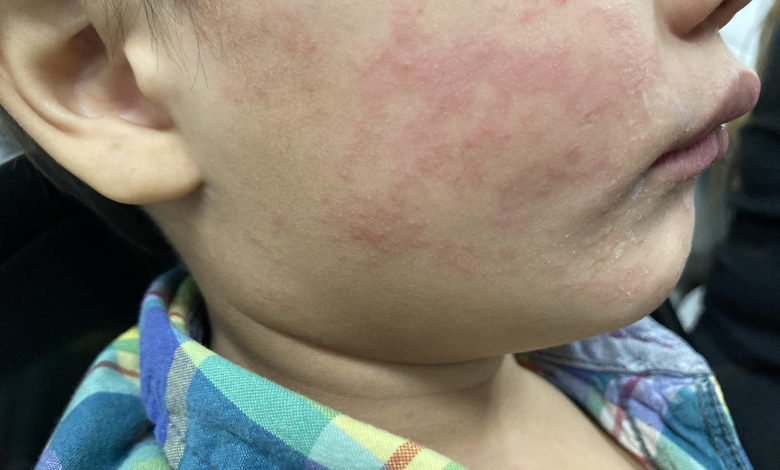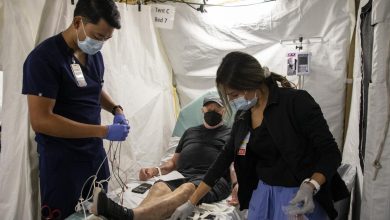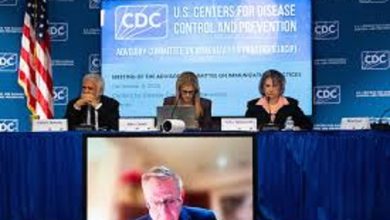Measles Outbreak in Austin: What Parents Need to Know Right Now

Parents in and around Austin, Texas, should take urgent notice. Recent developments indicate a potential measles threat emerging locally, even if no major outbreak has yet been confirmed within city limits. This article provides comprehensive and up‑to‑date information on what’s happened so far, who’s at risk, how to protect your children and family, and what you should do right now.
What’s Happened So Far in Austin & Texas
1.1 First Local Case in Austin Since 2019
On February 28, 2025, Austin Public Health reported an unvaccinated infant in Travis County who tested positive for measles, the first case in the city since 2019. The child was exposed abroad while traveling, and none of the family members were infected. While not linked to the larger statewide outbreak, this case served as a wake‑up call for local authorities.
1.2 Second Confirmed Travel‑Related Case
In April 2025, a second case was confirmed in Travis County. This time, an adult who had received two doses of MMR vaccine developed mild symptoms after domestic travel. Authorities emphasized that two MMR doses are ~97% effective in preventing serious disease, and vaccinated people are less likely to transmit measles.
1.3 Detection in Wastewater Signals Possible Spread
In early July, wastewater surveillance in Austin-Travis County detected measles viral particles in samples collected around July 6. Results released mid‑July prompted official alerts, although no new confirmed cases had emerged. Detection in wastewater does not mean a full outbreak—but it does mean the virus is present in the community.
1.4 Broader West Texas Outbreak
Meanwhile, a major measles outbreak is ongoing in West Texas—centered in Gaines County and among under‑vaccinated populations—including Mennonite communities. As of mid-2025, Texas had recorded over 760 confirmed cases and two measles-related child deaths, the first such fatalities in the U.S. in a decade. Hospitalizations and complications have been reported, especially in unvaccinated children.
Why This Matters to Austin Parents
2.1 Measles Is Extremely Contagious
Measles spreads through the air via droplets when an infected person coughs or sneezes—and the virus can linger in the air or on surfaces for up to two hours. About 90% of unvaccinated people exposed to a measles case will become infected. That makes containment fast and difficult.
2.2 Declining Vaccination Rates Lower Community Immunity
Travis County’s childhood MMR vaccination rate is below the 95% needed for herd immunity—only about 86.7% of kindergartners are fully vaccinated. This decline—driven by pandemic disruptions and vaccine hesitancy—puts the community at heightened risk. The health authority warns that if protections weaken further, a local outbreak may become inevitable.
2.3 Infants, Pregnant Women & Immunocompromised at Highest Risk
- Infants under 12 months are too young to receive the MMR vaccine and rely on others for protection.
- Pregnant women and individuals with compromised immune systems (e.g. due to cancer, HIV, immunosuppressive treatments) cannot safely receive the live MMR vaccine. For these groups, measles can be particularly severe.
2.4 Measles Causes Lasting Damage
Beyond acute illness, measles has long‑term consequences—including hospitalization, pneumonia, encephalitis (brain inflammation), and a phenomenon known as “immune amnesia,” which can erase immunity to other diseases, leaving children vulnerable later on.
Symptoms, Diagnosis & When to Get Help
3.1 Typical Timeline & Symptoms
Symptoms appear 7–14 days after exposure and often begin with:
- High fever (often over 101 °F)
- Cough, runny nose, inflamed or red eyes (conjunctivitis)
- Fatigue and irritability
After about 3–4 days, a red, blotchy skin rash appears—usually starting on the face and spreading downward over several days. A person is contagious from 4 days before to 4 days after the rash appears.
3.2 What to Do if You Suspect Exposure or Symptoms
If you or your child have symptoms or were exposed:
- Contact your healthcare provider immediately—don’t visit the clinic or ER without warning.
- Isolate at home to prevent further spread.
- If exposure occurred within the last 72 hours, individuals who are not fully vaccinated may still benefit from post‑exposure prophylaxis (PEP):
- MMR vaccine for those aged 6 months and older,
- Immune globulin (IG) for infants under 6 months, pregnant women, or immunocompromised people.
Diagnostic testing typically involves PCR or antibody blood tests.
Vaccination Guidance: What You Should Do
4.1 MMR Vaccine: The Gold Standard
Two doses of the MMR vaccine offer ~97% protection against measles. One dose provides around 93%. Anyone born after 1968 who received both properly spaced doses is assumed fully immune. Individuals born pre‑1957 are generally considered naturally immune due to exposure before widespread vaccination. Those born between 1957–1968 may lack reliable immunity—additional verification or vaccination is recommended.
Routine pediatric vaccine schedule:
- First dose at 12–15 months,
- Second dose at 4–6 years (or at least 28 days after the first if given after 12 months).
4.2 Who Needs to Check or Catch Up
- Children who missed any routine MMR dose.
- Adults unsure of their status or born between 1957–1968.
- Pregnant women, infants under 12 months, immunocompromised individuals who cannot receive MMR need alternative protection plans—such as ensuring all household contacts are vaccinated.
4.3 Local Access to Vaccination
Austin Public Health offers free or low‑cost MMR vaccines through its Shots for Tots and Big Shots clinics. Costs: typically about $13 for children, $25 for adults, with services available regardless of insurance. Clinics are located in South Austin (Stassney Lane) and Northeast Austin (Blessing Avenue). Call (512) 972‑5520 to schedule. Pharmacies or pediatric clinics (like Austin Regional Clinic) also offer vaccines, especially for those under 14 with prescriptions.
4.4 Booster Shots: Not Needed for Most
Unless you received an outdated measles vaccine between 1963–1967, public health officials are not recommending additional booster doses. Those with two doses of modern MMR are considered fully protected.
How Parents Can Protect Their Families Now
5.1 Confirm Vaccination Status
- Review your child’s medical records or contact their doctor or former schools.
- If needed, get a titer test or receive a catch‑up MMR shot.
- Adults unsure of immunization status can visit clinics or pharmacies to get vaccinated.
5.2 Practice Good Infection Control
- Stay vigilant if someone in your household has cold‑like symptoms and rash.
- Encourage proper hand hygiene, mask wearing if symptomatic, and rapid medical evaluation.
- Avoid crowded indoor spaces if your child or others are not yet vaccinated or are too young.
5.3 Plan for Back‑to‑School Requirements
- Many schools require proof of MMR vaccination before enrollment.
- Use this deadline as a prompt to confirm or update records now.
- Unvaccinated children exposed to measles may be excluded from school for 21 days as quarantine precautions.
5.4 Be Alert but Avoid Panic
- As of mid‑July 2025, no new confirmed measles cases have been reported in Travis County, beyond the two travel‑related ones. Nevertheless, detection in wastewater is a serious early signal.
- Public health messages emphasize preparedness—not alarm. Now is the time to ensure protection, not to panic.
Frequently Asked Questions (FAQ)
Q: Can vaccinated people still get measles?
A: Yes—but it’s rare, usually mild, and less likely to spread. Only a few fully vaccinated individuals have contracted measles in recent Texas and Austin cases.
Q: Should we delay daycare or school attendance?
A: No, not if children are fully vaccinated. Families of infants or immunocompromised households should take extra precautions during this period.
Q: Are grocery stores or public restrooms safe?
A: While measles can linger in airborne particles, normal public hygiene and routine cleaning reduce risk. The bigger concern is enclosed spaces with unvaccinated individuals.
Q: What if my child has one MMR dose only?
A: Children with only one dose are not considered fully protected. They need the second dose per CDC schedule or possibly catch‑up vaccination if missing.
Q: Can other diseases rebound after measles?
A: Yes—since measles can weaken immune memory, children who recover may lose immunity to other illnesses. Full vaccination remains critical.
Putting It into Perspective
7.1 Historic Context & Resurgence
Measles was declared eliminated in the U.S. in 2000. Yet outbreaks have occurred periodically—often linked to communities with lower vaccination coverage. The current outbreak in West Texas is the worst in nearly 30 years, with the first U.S. measles deaths in a decade.
7.2 Austin’s Vulnerability
Though only two travel‑related cases have occurred so far in Travis County, demographic and immunity gaps make the city especially vulnerable as school starts and fall arrives.
7.3 Why Now Matters
Every unvaccinated or undervaccinated individual potentially contributes to transmission. The current window before autumn offers time to catch up on vaccination and strengthen protection across the community.
Your Action Checklist
| Task | Why It Matters |
| Check MMR status (children & adults) | Ensures full immunity; fills gaps before exposure. |
| Get vaccinated ASAP if not up to date | MMR still effective as pre‑ and post‑exposure prevention. |
| Know exposure protocols | PEP within 72 hours may prevent infection. |
| Avoid exposure for infants and immunocompromised | They cannot receive full vaccination yet. |
| Stay informed and monitor local updates | Wastewater and health department reports may indicate early spread. |
| Follow school health policies and vaccination deadlines | To maintain access and prevent quarantine exclusion. |
Closing Thoughts
- To date, Austin has not experienced a local measles outbreak, but with virus detected in wastewater, transmission may already be underway.
- Vaccination remains the single most effective protection. Families should confirm doses and act quickly to immunize.
- While numbers remain low in Travis County, the situation mirrors broader trends: declining immunization rates, misinformation, and preventable spread.
- Now is the time to be proactive—not reactive. Measles can spread silently and swiftly; ensuring protection today helps avoid serious consequences tomorrow.




